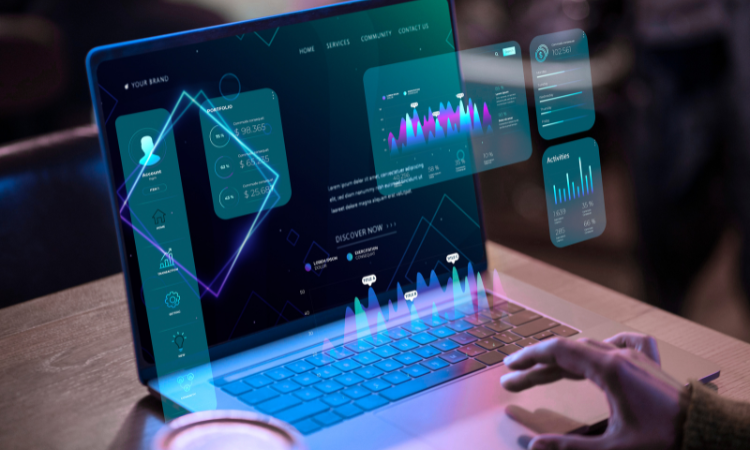If you’re leading CX, Product, or qualitative research at scale, you don’t have a feedback problem—you have a feedback overload problem.
Support tickets, survey comments, focus groups, app‑store ratings, sales‑call transcripts, and online surveys—your customers are constantly handing you mountains of qualitative data. But without the right thematic analysis software, those voices stay buried in spreadsheets, Slack threads, and dashboards no one checks.
And that means product issues go unnoticed. CSAT drops get explained too late. Your roadmap stays blind to what users actually care about.
This blog cuts through the noise. We’ve handpicked the best thematic analysis tools—not just for surface-level sentiment, but for real-time insights, smart clustering, multilingual feedback, and linking themes directly to NPS, churn, and revenue.
Whether you’re in Product Ops, CX strategy, or research, this blog will help you spot patterns before churn happens, prioritize product fixes with clarity, and turn raw, unstructured feedback into action. Let’s dive in!
Are you short on time? Visit the top thematic analysis tools to find the right one for your needs.
TL;DR
- Thematic analysis software helps businesses and researchers analyze unstructured data to uncover patterns, trends, and actionable insights, driving better decision-making and strategy.
- Advanced thematic analysis tools offer powerful features like AI customer feedback analysis, collaboration capabilities, and integration with other platforms to provide deeper, more actionable insights.
- Stand‑out options include Zonka Feedback, Thematic, and MAXQDA—each excelling at a different part of the thematic analysis process from data import to theme identification and refining themes, to acting on them and closing the feedback loop.
- Transform unstructured qualitative data into strategic insights and competitive advantage with Zonka Feedback’s AI-powered thematic analysis— book a demo or start your 14-day free trial today.
Spot Emerging Trends and Take Action in Real-Time ⏳
Don’t wait for insights—monitor customer data as it happens. With real-time trend detection and AI-powered analytics, stay ahead of shifting sentiment, pain points, and growth opportunities.

If you want to go straight into the list of the best thematic analysis tools, you can read them here. Prefer to understand how Thematic analysis tools works and what to look for? Keep reading below.
What is Thematic Analysis Software?
Thematic analysis software is a qualitative data analysis tool that assists researchers and CX pros in identifying, analyzing, and reporting patterns—or key patterns—within qualitative text analysis sources such as interviews, surveys, or open‑ended responses. It simplifies the process of coding data, organizing themes, and visualizing relationships, making it easier to identify themes and uncover meaningful insights.
These tools often feature an intuitive interface and automated functions, such as suggesting potential themes or grouping similar data points. Many include drag‑and‑drop data import for PDFs, text documents, video files, and even raw audio. They also offer advanced capabilities—like custom coding frameworks, real‑time collaboration, and technical and methodological support—which enhance efficiency and depth of analysis for both qualitative and mixed methods teams.
Why Do You Need Thematic Analysis Software?
Qualitative insights are booming and becoming more critical than ever. To manage that, you need robust thematic analysis software. It saves you from drowning in qualitative data and also helps you in the following aspects:
|
Aspect |
Challenges |
How Does Thematic Analysis Software Help? |
|
Data Overload |
Manually analyzing thousands of responses is overwhelming. |
Automates categorization and theme detection, saving time. |
|
Hidden Patterns |
Identifying subtle trends across different responses is difficult. |
Uses AI to detect emotions, recurring themes, and sentiments. |
|
Bias & Subjectivity |
Human interpretation can be inconsistent and biased. |
Ensures unbiased, data-driven insights with AI-powered analysis. |
|
Time Consumption |
Manually sorting, tagging, and analyzing data is slow. |
Processes large datasets in minutes, improving efficiency. |
|
Scalability Issues |
Expanding qualitative research requires more resources. |
Scales effortlessly with increasing data volumes. |
|
Data Visualization |
Manually organizing data into structured insights is complex. |
Generates reports with clear visualizations like word clouds and charts. |
|
Integration Needs |
Data from different sources need to be analyzed together. |
Integrates with survey tools, CRMs, and feedback platforms. |
Instead of spending hours manually analyzing text, thematic analysis software leverages generative AI and advanced NLP to do the heavy lifting for you. It rapidly identifies key patterns and nuances in your data—faster and more accurately—empowering you to make informed decisions.
Must-Have Key Features in Thematic Analysis Software
Modern thematic analysis software isn't just about categorizing feedback — it must transform massive volumes of unstructured data into actionable insights rapidly, reliably, and collaboratively. When evaluating solutions, ensure these capabilities are non-negotiable.
- AI‑Driven Grouping and Theme Detection: Forget spreadsheets. The right software should instantly group similar feedback, detect recurring themes, and show you why they matter.
- Advanced Natural Language Processing: Great analysis reads between the lines; NLP extracts context to surface meaningful patterns.
- Multi‑Source Feedback Integration: Pull data from surveys, reviews, support tickets, chats, customer interviews, and emails—unifying the full voice‑of‑customer picture.
- Sentiment Analysis: Sentiment detection lets you see where frustration is rising, what’s delighting users, and how emotional tone shifts across products, channels, or time.
- Customizable Taxonomies: Thematic analysis tool should define themes that mirror your business logic and research questions.
- Scalability & Performance: Your thematic analysis software should be able to handle anything from a pilot study to global market research datasets.
- Interactive Dashboards & Visual Tools: Word clouds, heat maps, driver charts, and data visualization that anyone can explore should be intuitive, fully interactive, and drill-down ready.
- Real-Time Alerts and Notifications: The right thematic tool should alert you the moment sentiment drops, new issues emerge, or a keyword surges—giving you the power to respond in real time, not after the damage is done.
Advanced Features that Some Thematic Analysis Tools Offer
Once you’ve got the fundamentals in place—theme detection, sentiment analysis, and centralized feedback—the next step is leveling up your insights. If you're managing feedback across departments, teams, or geographies, you’ll need more than just a surface scan. These advanced features help you scale, personalize, and operationalize your feedback at an enterprise level:
- Role-Based Dashboards: Not every stakeholder needs the same view of customer feedback. The best tools tailor dashboards based on roles—giving CX leaders macro trends, ops teams local pain points, and product managers feature-level insight. That way, everyone gets the context they need to act fast and confidently.
- Smart Action Recommendations: Some tools do more than just report themes—they tell you what to do about them. Agentic AI recommends actions based on patterns, urgency, or historical resolution data. Think: “CSAT is dropping due to onboarding confusion—assign to product team” or “Spike in payment complaints—flag for billing review.”
- Generative AI for Insight Generation: AI that talks back? Yes, please. Generative AI lets teams query their data in plain English—“What are the top complaints post-launch?”—and receive ready-to-use summaries. It’s like having an always-on analyst that interprets trends, surfaces anomalies, and even generates shareable insight briefs.
- Key Driver Analysis: Which themes are actually impacting NPS or churn? Advanced tools quantify the influence of feedback topics on business outcomes, helping you prioritize what to fix first. If “Billing Confusion” is a small volume issue but a major driver of low CSAT, driver analysis helps you catch it before it snowballs.
- Customizable Workflows and Integrations: To make insights even more powerful, leading tools allow custom triggers, alerts, and workflows—like turning a negative review into a Jira ticket or routing product complaints straight to Slack. This tight integration turns passive insight into cross-functional momentum.
How to Choose the Best Thematic Analysis Tool?
When choosing thematic analysis software, consider factors like whether the software identifies themes autonomously or requires training, and its capacity to organize data effectively you’re working with.
Not only that but:
- Is it easy to use? You don’t want to spend hours learning a complicated system. A simple, intuitive user friendly interface is key.
- Can it grow with you? If your data volume increases, will the tool keep up? Scalability is important.
- Does it give accurate insights? Some tools just match keywords, while others truly understand themes. Choose wisely.
- Is it worth the cost? Compare features with pricing—does it offer real value for what you’re paying?
- What about customer support? If something goes wrong, will you have help when you need it?
- Is your data safe? Security and compliance should be a priority, especially when dealing with sensitive feedback.
At the end of the day, the best thematic analysis software should make your life easier. It should take the guesswork out of analyzing text data, helping you find meaningful insights quickly. Choose the best customer experience tool that fits your needs, integrates with your workflow, and gives you the confidence to make data-driven decisions.
A Quick Overview of Best Thematic Analysis Software Tools
Here is a quick comparison of the leading thematic analysis tools, helping you choose the best one for your business requirements:
| Thematic Analysis Software | Ideal For | Standout Feature | Capterra Rating |
| Zonka Feedback | All service-based businesses, CX teams, multi-location enterprises | Real-time feedback loop with smart routing, entity tagging, role based dashboard with Agentic AI | 4.8 |
| Skimle | Academic researchers, consultants, lawyers needing rigorous yet fast analysis | AI-driven multi-level thematic analysis with full two-way transparency | NA |
| Thematic | CX strategy & Insights teams | Customizable taxonomy with high-precision theme detection & AI Q&A | 4.9 |
| Usercall | UX, product & research teams that need voice-first qualitative analysis | AI-moderated voice interviews that auto-transcribe, cluster themes, and generate slide-ready insight reports | NA |
| Dovetail | UX Researchers & Qualitative Product Teams | Clustering of interview and voice data with searchable repository | 4.6 |
| MAXQDA | Academic researchers, NGOs, mixed-methods analysts | Manual + AI coding with deep visual & statistical modeling | 4.7 |
| ATLAS.ti | Hybrid research-product orgs needing depth + automation | GPT-powered auto-coding and thematic relationship mapping | 4.8 |
| Kapiche | Enterprise CX & Analytics teams | No-code NLP with driver analysis linking feedback to KPIs | NA |
| Enterpret | Product Ops & Growth teams | Dual-layer taxonomy with anomaly alerts and intent classification | NA |
| Lumoa | Fast-paced CX & Customer Success teams | Real-time AI answers with emotion-to-impact analysis | NA |
| Keatext | Customer Support, Ops, and CX managers | Fast, plug-and-play insights with actionable AI suggestions | 3.8 |
| Zelta AI | Product teams mining calls/chats for insight | Transcribes support calls to product-ready feedback themes | 4.3 |
Top Thematic Analysis Software
Let's dive in-depth into each thematic analysis software highlighting their key strengths, AI capabilities, and collaboration features:
1. Zonka Feedback
Zonka Feedback transforms traditional feedback collection into an operational advantage by turning every customer voice into structured, prioritized, and actionable intelligence — in real time. Unlike basic survey platforms that leave insights trapped in dashboards, Zonka Feedback empowers your teams to detect urgency, emotion, and themes automatically, route feedback to the right owners, and close the loop without delay.
From collecting customer experience data from multiple sources like surveys, chat, call transcripts, support tickets, reviews, and helpdesks to using advanced NLP and machine learning to detect urgency, analyze sentiment, cluster recurring themes, and auto-summarize responses, it ensures that nothing slips through the cracks and every critical insight is immediately actionable. Feedback is auto-assigned to the right team, tagged by entity (product, location, agent), and sent into action via tickets, tasks, or direct replies.
Need to know how sentiment is trending for a new feature? Want to monitor complaints by region or surface issues affecting CSAT in real time? Zonka Feedback delivers granular analysis with role-specific dashboards, smart alerts, and collaborative workflows — so every insight turns into action fast.
Whether you’re managing thousands or scaling to hundreds of thousands of responses per month, Zonka Feedback stays fast, responsive, and aligned to your business structure. From collection to classification to closure, it turns customer feedback into an operational flywheel that fuels smarter decisions, improved retention, and aligned teams.
Key Features
- Thematic Intelligence with Emotion & Sentiment Detection: Automatically detects emotions, urgency, and clusters recurring feedback into themes — helping teams uncover patterns and pain points without manual tagging or coding.
- Entity Mapping & Attribute-Based Insights: Tags responses by product, location, or agent to deliver contextual insights, making it easier to trace feedback to the right owners and act quickly.
- Smart AI Workflow Automation: Instantly categorizes and routes feedback based on urgency or theme, triggering tasks, alerts, or tickets — ensuring critical feedback is acted on without delays.
- Flexible Taxonomy & Custom Theme Structuring: Lets teams define and organize themes based on business logic, workflows, or KPIs — ideal for complex, multi-team setups or industry-specific use cases.
- Role-Based Dashboards & Data Access: Provides tailored dashboards for each role — from executive summaries to frontline feedback views — enabling focused insight without extra filtering or confusion.
- Integrated Sentiment Reports: Generates digestible summaries of customer sentiment across topics and channels, helping teams understand how customers feel and why, without manual deep-dives.
- Collaborative Feedback Management: Enables real-time teamwork through shared inboxes, tagging, and annotations — so cross-functional teams can manage and resolve feedback together, all in one place.
- Scalable Feedback Intelligence Engine: Handles high response volumes with consistent speed and reliability; AI models improve continuously as feedback grows, delivering sharper, more relevant insights over time.
- Multilingual Feedback Analysis with AI Translations: Automatically translates feedback from different languages, ensuring consistent analysis and unified insights for global teams — no language barriers.
- Advanced Visualization & Deep Dives: Delivers visual feedback analysis via heat maps, trend graphs, and word clouds — allowing teams to explore key themes and track changes over time.
- Seamless Integrations & Cross-Channel Intelligence: Consolidates feedback from surveys, reviews, support tickets, and chats into one view through integrations with CRMs, helpdesks, and other platforms.
Pros
- End-to-end customer feedback and analysis platform
- AI-detected themes, sentiment, urgency, and emotional tone
- Entity-level tagging for precise insights
- Custom dashboards tailored to roles and responsibilities
- Real-time alerts and smart workflow automation built-in
- Supports multilingual feedback with AI-based translation
- Handles large-scale feedback without slowing down
- Enables collaboration with shared inbox and tagging
Cons
- A few integrations are in progress. So, if you don’t see the one you need, reach out to us and we’ll do it just for you.
Scale Thematic Analysis Without the Manual Effort 🚀
Analyze thousands of user responses effortlessly with AI tools that process diverse data types, extract meaningful themes, and turn qualitative insights into strategic actions.

2. Skimle
Skimle is an AI-powered qualitative analysis platform that combines academic rigor with business speed. Unlike tools offering "chat with your documents," Skimle performs systematic thematic
analysis the way expert researchers do—reading each document comprehensively, identifying insights, and organizing them into editable category structures. It's designed for professionals who need both speed and defensible methodology: researchers conducting interview studies, consultants analyzing due diligence materials, policy analysts processing consultation feedback, and market researchers synthesizing customer insights.

Key Features
- Systematic Document Processing: AI analyzes every paragraph using hundreds of atomic LLM calls following academic thematic analysis methodology
- Skimle table Interface: Spreadsheet-like view showing documents as rows, themes as columns—see what each document says about each theme at a glance
- Two-Way transparency: Navigate from categories to quotes and quotes to categories with full traceability
- Editable category structure: Merge, split, rename, and reorganize AI-suggested themes to match your analytical framework
- Multi-format support: Upload PDFs, Word docs, transcripts, audio, video, etc.
- 100+ languages: Analyze multilingual datasets without translation delays
- Multiple export formats: Generate Word reports, Excel tables, PowerPoint decks with organized insights and supporting quotes
- AI-Assisted deep dives: Context-aware chat that knows your categories and metadata for advanced analysis
Pros
- Academic-grade rigor: Based on established thematic analysis methods (Gioia, Braun & Clarke etc.), not superficial LLM wrappers
- Full traceability: Every insight links to source quotes with document references—defend findings with evidence
- Comprehensive coverage: Systematic processing ensures no documents fall through cracks; no arbitrary context window limits
- User control: AI suggests structure, user refines — not a black-box autopilot
- Speed: What takes weeks manually (coding 40 interviews) takes hours with Skimle while maintaining quality
Cons
- Newer platform: Smaller user base than established tools like NVivo (though growing rapidly at 20+ universities)
- Learning curve for traditional users: If you're used to NVivo's manual highlighting workflow, AI-native approach requires mindset and focus shift from manual entry to review and insights
- Not for mixed methods: Focuses on qualitative analysis; doesn't integrate quantitative data analysis like MAXQDA
3. Thematic
Powered by proprietary AI and built by NLP experts, Thematic is a powerful AI survey tool that transforms open-ended feedback into accurate, layered insights without manual tagging or setup. It brings clarity to chaos by auto-detecting recurring themes and sub-themes across surveys, chats, support tickets, reviews, and social channels. But what makes Thematic stand out is its theme editor — a human-in-the-loop layer that lets analysts refine and customize AI-detected themes, creating insights your stakeholders actually trust.
With real-time dashboards, sentiment analysis, and even a plain-English AI assistant (“Thematic Answers”) for querying feedback on the fly, it empowers your teams to move beyond anecdotal opinions and prioritize changes backed by data. Whether you're spotting churn drivers, testing the impact of a product update, or reporting on NPS trends, Thematic helps you get the story straight — and fast.

Key Features
- Automated Theme Detection: Proprietary AI automatically surfaces high-quality themes and sub-themes from open-ended feedback — no manual setup needed.
- Sentiment & Emotion Analysis: Built-in sentiment scoring and emotional tagging help interpret not just what’s said, but how customers feel about it.
- Multi-Source Feedback Integration: Consolidates data from surveys, support tickets, app reviews, chat logs, and more into a single analysis stream.
- Impact & Trend Analysis: Links themes to CSAT, NPS, and other KPIs, highlighting which issues matter most and where to act first.
- Interactive Dashboards & Visualizations: Explore trends, view comment examples, and share role-based insights through easy-to-navigate dashboards.
- AI “Answers” Assistant: Ask plain-language questions like “Why did NPS drop this quarter?” and get structured, AI-summarized responses.
- Customizable Taxonomy & Theme Editor: Analysts can rename, merge, or split AI-detected themes to better reflect internal terminology or business logic.
- Real-Time Alerts & Emerging Theme Detection: Set alerts for theme spikes or score drops, so teams can react quickly to new issues.
Pros
- Unmatched theme detection accuracy with minimal setup
- Powerful impact analysis tied to CX metrics
- Supports 60+ languages and global data sets
- Works across channels: surveys, reviews, tickets, and more
- Scalable infrastructure for enterprise-level feedback volumes
- Integrates with CRMs, BI tools, and survey platforms
Cons
- No hierarchical structuring for layered themes
- No native report builder for stakeholder presentations
- Limited support for competitive benchmarking out-of-the-box
4. Usercall
Usercall is a modern qualitative research and thematic analysis platform that turns raw interviews, survey responses, and voice feedback into structured, actionable insight—fast. Built for UX, product, and research teams, it uses voice-AI transcription and smart clustering to surface recurring themes, emotions, and patterns from user conversations. But where it truly shines is its hybrid workflow: AI suggests the structure, and researchers stay in control—approving, editing, and customizing themes to match their specific research goals.
With multilingual support, flexible data sources, and one-click insight report generation, Usercall helps teams move from transcript to shareable insight in hours. Whether you’re analyzing usability interviews, discovery calls, or open-text NPS responses, Usercall gives you depth, speed, and clarity without the manual grind.

Key Features
- Human-in-the-Loop Theme Validation: AI surfaces quotes and themes, but researchers approve and customize clusters before insights are finalized—ensuring quality and context remain intact.
- Customizable Thematic Frameworks: Tailor your analysis by aligning themes to research goals like purchase drivers, friction points, or persona-specific needs.
- Automated Insight Reports: Instantly generate slide-ready reports (pptx + pdf) with key findings, top quotes, emotion highlights, and visual summaries—perfect for internal or client share-outs.
- Emotion & Sentiment Tagging: Detect not just what users say, but how strongly they feel—great for spotting moments of delight, frustration, or hesitation.
- Voice & Text Feedback Support: Analyze interview transcripts, survey comments, app store reviews, and more in one place—with direct support for 30+ languages.
- Ask-AI Q&A Interface: Explore your data by asking natural-language questions like “What frustrated users during onboarding?” and receive structured, evidence-backed answers.
- Multi-Project Comparison: Track how feedback themes shift over time or across user segments, making trend analysis easy to visualize and present.
- Secure & Compliant by Design: GDPR-compliant, encrypted, and built with privacy features like transcript anonymization for research at any scale.
Pros
- Combines AI speed with researcher approval for trustable results
- Insight report builder saves hours of manual formatting
- Designed for both voice and text-based qualitative data
- Supports international, multi-language projects out-of-the-box
- Integrates with NVivo, SPSS, Qualtrics, and more via export/API
Cons
- Requires initial researcher setup to guide analysis goals
- Not optimized for massive enterprise CX data sets
- No built-in CRM integrations
5. Dovetail
Dovetail brings a researcher’s mindset to thematic analysis — blending qualitative depth with AI speed. Originally designed for UX and user interviews, it has evolved into a powerful feedback analysis platform for research teams that want to uncover themes, trends, and insights directly from user interviews, support calls, survey responses, app reviews. Its AI-powered features like Magic Transcription and Magic Clustering drastically reduce manual work by transcribing conversations, tagging highlights, and suggesting themes automatically — all while preserving the human context of the original feedback.
Teams can visualize sentiment trends, slice insights by persona or region, and even query the repository in plain language using the built-in AI assistant. Whether you’re sharing a playlist of customer quotes with your product team or exploring support ticket patterns by theme, Dovetail helps teams discover what matters most — and keep those insights accessible, living, and in motion.
Key Features
- AI-Powered Transcription & Highlights: Upload audio or video feedback and get fast, accurate transcripts with AI-suggested highlights and tags — available in 40+ languages.
- Magic Clustering & Thematic Coding: Automatically groups similar insights into themes, which can be refined or merged — giving you full control over your taxonomy.
- Interactive Analysis & Sentiment Tracking: Visualize emerging themes, track sentiment shifts over time, and filter insights by customer attributes like region or persona.
- Conversational AI Search Assistant: Use plain-English queries like “Why are users churning?” and get AI-generated summaries with source-backed evidence.
- Insight Repository & Collaboration: Store all research in one searchable hub, share clips or reports, and work collaboratively with tagging, notes, and role-based access.
- Integrations & Real-Time Importing: Connect Dovetail with Zendesk, Slack, Teams, and analytics tools to import tickets or surface insights across your stack.
Pros
- AI clustering removes manual sorting and theme discovery
- Auto-transcription and tagging for interviews and calls
- Smart filters and search improve insight discovery
- Dashboard visuals simplify qualitative data analysis
- Centralized research hub enables team collaboration
- Cloud-based, scalable, and easily accessible anywhere
- Clean, intuitive interface speeds up adoption
Cons
-
Limited chart types in visual reporting
- Tagging still requires some manual input
- No native metric correlation (e.g. NPS linkage)
- Learning curve for setting up tagging frameworks
6. MAXQDA
MAXQDA is qualitative data analysis software built for deep qualitative analysis that’s now infused with AI to support fast, reliable thematic insights. Originally popular in academic research project, this thematic analysis software has evolved into a serious contender for businesses analyzing customer feedback multiple sources. Unlike cloud-native feedback platforms, MAXQDA offers a desktop-first experience with rich visual tools and unmatched depth. You can manually code feedback line-by-line, then use its AI Assist to suggest subthemes, auto-summarize documents, and even query your dataset conversationally.
Its flexible taxonomy and mixed-methods framework allows your team to analyze and correlate qualitative data with customer scores, enabling researchers to move from anecdotal evidence to structured insight. MAXQDA may not shout alerts in Slack, but for teams that value methodological rigor, rich visualization, and full control over their data — it’s a smart, dependable choice for thematic analysis that doesn’t cut corners.
Key Features
- Manual & AI-Assisted Coding: Combine traditional hand-coding with AI-suggested codes, summaries, and subthemes to accelerate thematic discovery.
- Topic Modeling & Pattern Detection: Uses machine learning to surface latent themes from large datasets — ideal for pre-coding exploration.
- Sentiment & Emotion Analysis: Detects tone and emotional sentiment within responses, with configurable dictionaries for language-specific analysis.
- Mixed-Methods Analysis: Correlate qualitative feedback with survey scores or customer attributes to link themes with business impact.
- Interactive Visualizations: Generate word clouds, concept maps, and matrix charts to visualize relationships and theme frequency.
- Multilingual Data Support: Analyze feedback in dozens of languages, including RTL and Unicode — excellent for global research teams.
- Team Collaboration & Audit Trails: Collaborate via TeamCloud, merge contributions, and track changes for transparency and structured teamwork.
Pros
- Blends manual rigor with AI speed and suggestions
- Supports text, audio, video, and survey data
- Topic modeling reveals hidden patterns in large datasets
- Rich visual tools aid in insight interpretation
- Powerful mixed-methods support connects themes to metrics
- Handles multilingual data with accuracy
- Strong version control and audit logs for teams
Cons
-
It can slow down with very large datasets
-
Limited real-time cloud collaboration
- Steep learning curve for non-research users
- Desktop-first setup may not suit every organization
7. ATLAS.ti
ATLAS.ti brings powerful AI into the hands of researchers and product teams alike — combining rich qualitative analysis tools with automated coding, sentiment tracking, and conversational AI. Long known for its rigorous coding features, ATLAS.ti now makes analysis faster and more accessible. With AI Auto-Coding powered by GPT, you can instantly tag hundreds of responses with suggested themes like “Feature Request” or “Delivery Issue.” The platform also supports Conversational AI, where stakeholders can ask plain-English questions and receive narrative answers backed by source quotes — perfect for quick executive insights.
The platform stands out with its visual approach to qualitative data. From word clouds to concept maps and linkage views, ATLAS.ti helps teams not just find themes but understand how they connect. It supports both manual depth and AI speed, giving researchers full control while accelerating discovery across distributed teams and massive datasets.

Key Features
- AI Auto-Coding with GPT: Automatically tags large volumes of feedback with relevant codes; refine results with custom inputs and coding frames.
- Conversational AI Interface: Query your data using natural language to extract summary insights — no analyst required.
- Sentiment & Emotion Detection: Classifies tone (positive, neutral, negative) and emotions (e.g. anger, joy) to reveal underlying customer feelings.
- Multi-Source Feedback Integration: Import surveys, tickets, reviews, videos, or transcripts — including support for real-time tools like Zendesk and CSV uploads.
- Visual Analytics & Concept Mapping: Create word clouds, theme networks, and relationship maps to explore patterns across qualitative datasets.
- Cross-Platform Access: Use on Windows, Mac, or Web — ideal for hybrid teams. AI features currently strongest in desktop app.
- Insight Recommendations & Custom Reports: AI identifies priority themes and suggests focus areas; export findings through customizable dashboards and reports.
Pros
- Combines manual rigor with GPT-powered AI coding
- AI chatbot enables natural language insight discovery
- Interactive concept maps and visual feedback structures
- Works across desktop, web, and all major OS platforms
- Supports large-scale, multi-format datasets
- Excellent for deep dives and stakeholder storytelling
Cons
- Collaboration not fully real-time across cloud teams
- Lacks granular annotation tools for team-based tagging
- Some AI features desktop-only, limiting Web-first users
- AI processing may lag with very large datasets
- Doesn’t assign tasks or close the feedback loop
8. Kapiche
Kapiche is a feedback analytics platform purpose-built for high-volume, high-velocity customer data. It skips the manual tagging and dives straight into AI-powered deeper analysis — extracting themes, sentiment, and customer drivers from surveys, support tickets, emails, and more. Unlike tools that require code frames or upfront training, Kapiche is plug-and-play. You upload your data, and its adaptive NLP models do the heavy lifting — uncovering what customers are saying and why it matters. From a single dashboard, teams can track trending themes, understand how feedback is evolving, and correlate specific topics to business metrics like NPS, churn, or revenue.
What sets Kapiche apart is its ability to link unstructured feedback to structured outcomes. It doesn’t just tell you what’s broken — it highlights which issues are hurting your KPIs and shows you where to focus next. For fast-paced enterprise environments that need to go from insight to action, Kapiche acts like your customer insight engine — always on, always learning.

Key Features
- Adaptive NLP Theme Detection: Automatically clusters feedback into themes and sub-themes with no manual coding or predefined taxonomies.
- Sentiment & Emotion Analysis: Tags sentiment and emotion at scale — see what’s driving frustration or delight in real time.
- Multi-Source Feedback Dashboard: Consolidates data from surveys, reviews, tickets, social media, and more — filter by source or segment.
- Driver & Impact Analysis: Links themes to KPIs like NPS and churn; visualizes which feedback topics impact performance the most.
- Alerts & Real-Time Anomaly Detection: Detects sentiment spikes or sudden changes in topics; set alerts to stay ahead of emerging issues.
- AI-Powered Reporting: Automatically generates weekly or monthly summaries of insights — ready to share with stakeholders.
- Enterprise-Ready Scalability: Supports multi-language datasets, large-scale ingestion, and integrations into your tech stack via APIs.
Pros
- Correlates themes directly with NPS, churn, and revenue
- Clear dashboards and self-serve interface for teams
- Easily consolidates and compares feedback across channels
- Multi-language analysis with translation support
- Real-time alerts and scheduled reporting built-in
-
Strong API and integration capabilities for enterprises
Cons
- Initial data prep and source mapping may require effort
- Insights don’t auto-trigger actions or workflows
- Lacks manual tagging or deep qualitative transparency
9. Enterpret
If your feedback lives in too many places — surveys in one tool, support tickets in another, app reviews somewhere else — Enterpret is the system that pulls it all together and actually makes sense of it. It’s built for product and CX teams who want a single, intelligent hub to understand what customers are saying, why they’re saying it, and how it impacts the product roadmap. What makes Enterpret different? Its two-level taxonomy does more than just group keywords. It pairs the what (like “notifications”) with the why (like “too frequent at night”) — helping teams not only spot recurring topics, but understand the intent behind them.
Add to that real-time alerts for feedback spikes, and you’ve got a live pulse on what’s changing in your customer experience — without waiting for a report to land in your inbox. From tagging every piece of feedback with an intent label (like Complaint or Praise) to integrating with your workflows (Jira, Slack, Salesforce), Enterpret doesn’t just analyze — it accelerates action.

Key Features
- Tracked Keywords + Root Causes: Automatically groups feedback by topic and its underlying reason — giving teams clarity on both surface issues and deeper pain points.
- Intent Classification: Feedback is categorized as Complaint, Praise, Help, or Improvement — perfect for filtering what’s wrong vs. what’s working.
- Anomaly Alerts: Detects sudden spikes or dips in any tracked topic — and flags them instantly, so no emerging issue goes unnoticed.
- Live Dashboards: Shows how topics and sentiment evolve over time, broken down by source, segment, or keyword.
- Unlimited Collaboration: Every team can explore insights in real time — no per-user limits, no gatekeeping.
- Built-In Workflows: Push feedback themes directly into Jira, Slack, or PM tools — from insight to backlog in seconds.
Pros
- Dual taxonomy explains both “what” and “why”
- Real-time alerts highlight issues as they emerge
- AI adapts to feedback patterns and corrections
- Intuitive, customizable dashboards for stakeholders
- Strong integrations with CX and product tools
- Built for scale and feedback-heavy orgs
Cons
- Requires time to connect all your feedback sources
- Features and UX still evolving as the platform matures
- Focuses on text — lacks survey design or quant tools
10. Lumoa
Lumoa makes customer feedback feel less like a chore — and more like an intelligent conversation. You plug in data from surveys, reviews, emails, or support calls, and Lumoa turns it into real-time answers. You can ask questions like, “What’s hurting our onboarding experience?” and get clear, AI-powered insights — no dashboard digging or data scientist required. Built for CX teams who want to move fast, Lumoa highlights not just what customers are saying, but what’s actually driving your NPS or CSAT scores up or down. It doesn’t drown you in data; instead, it delivers plain-language summaries, sentiment breakdowns, and ranked drivers of satisfaction — all within a clean, business-friendly interface.
And when it spots a problem trending (say, complaints about delivery delays spike overnight), it sends you an alert — so your team can fix it before it escalates. Whether you're analyzing feedback in English or Estonian, Lumoa keeps everything centralized, real-time, and ready to act on.

Key Features
- AI Insight Summaries: Uses GPT-based analysis to turn feedback into easy-to-read answers — even auto-generates monthly highlights and summaries.
- Centralized Feedback Intelligence: Brings together feedback from surveys, social media, call notes, and more — all in one visual hub.
- Pre-Built & Customizable Categories: Classifies themes with 100+ CX-ready categories and supports business-specific tagging.
- Sentiment & Emotion Analysis: Understands tone and mood across languages — shows not just what’s said, but how customers feel about it.
- Driver Impact & Root Cause Detection: Links feedback themes to NPS/CSAT movements — and pinpoints root causes behind score drops.
- Action Management & Alerts: Create, assign, and track actions tied to insights. Get alerts when feedback trends shift or sentiment dips.
Pros
- Ask questions and get AI-powered answers
- Fast feedback-to-insight turnaround in real time
- Clean, accessible dashboard for non-analysts
- Directly links feedback to key CX metrics
- Supports 60+ languages with accurate translation
- Tracks actions taken and their outcomes
Cons
- May feel too simplified for data-heavy analysts
- Doesn’t collect feedback — needs external sources
- Advanced predictive features still evolving
- Action workflows are basic, not full-featured
11. Keatext
Keatext is a thematic analysis tool that reads through all the survey comments, support tickets and app reviews to give you a clear list of what customers are saying — and what to do about it. It pairs feedback interpretation with AI-generated recommendations, so instead of staring at dashboards, teams get prioritized action items like: “Simplify your cancellation process – 40% of negative reviews mention confusion.” It's like having a CX analyst baked into your feedback stack.
You don’t need to build taxonomies or train the AI — just connect your data and go. With fast, multilingual analysis and flexible reporting, Keatext is ideal for teams who want accurate, actionable insights without a heavy lift. It’s a smart engine that plugs into your existing tools and turns customer sentiment into structured, stakeholder-ready direction.

Key Features
- AI Theme Extraction: Automatically groups feedback into topics — no tagging or setup required. You can refine themes, but most are accurate out-of-the-box.
- Sentiment & Emotion Analysis: Tracks not just polarity, but emotional tone — like frustration, satisfaction, or anger — and shows intensity across themes.
- AI-Powered Recommendations: Suggests specific actions based on feedback trends and sentiment. Perfect for turning insights into next steps.
- Customizable Dashboards & Reports: Drag-and-drop widgets, trend charts, and one-click PDF exports make it easy to share insights across teams.
- API & Integrations: Connects with survey tools, CRMs, and support platforms. Data can be pushed in automatically, and results pulled into BI dashboards.
Pros
- Delivers insights quickly with minimal setup
- AI suggests next actions, not just themes
- Highly customizable dashboards and exports
- Transparent — see raw feedback behind the charts
- Supports large data sets and multiple languages
- Easily integrates into existing workflows
Cons
- Limited manual control for custom taxonomies
- Advanced BI modeling may require external tools
- Predefined categorization may not fit all niches
- Requires solid data volume for best performance
12. Zelta AI
Zelta AI, now a part of Pendo, did something different in the feedback analytics world — instead of focusing on surveys or structured tickets, it dove straight into customer conversations. Think call recordings, Zoom meetings, support chats. It listened in, transcribed the exchanges, and pulled out product insights with incredible clarity. Its technology specializes in turning underutilized support data into structured, prioritized feedback. Whether it’s identifying repeated friction in onboarding or surfacing a spike in complaints about a recent release, Zelta’s NLP engine transforms raw dialogue into clear themes and AI-generated recommendations. It doesn’t just tell you what customers said — it tells you what to fix.
Built for SaaS product teams and CS leaders, Zelta AI bridged the gap between support and product like few others. By automating the discovery of trends in voice and chat interactions, it enabled faster, more proactive product decisions — often before NPS dropped or churn escalated.
Key Features
- Conversational Feedback Intelligence: Analyzes Zoom calls, Gong transcripts, and chat logs to extract product themes, pain points, and feature requests.
- AI-Powered Summaries & Highlights: Translates hours of conversation into concise summaries — like “30% of this week’s calls cited onboarding friction.”
- Proactive Insight Detection: Flags emerging issues in real time, helping teams respond before complaints snowball.
- Integrated Product Workflows: Sends insights directly into Jira, Pendo, or PM tools to trigger backlog items or product discussions.
- Support-to-Product Alignment: Connects CS teams with product by turning customer complaints into structured, actionable insight streams.
- Multichannel Input Integrations: Pulls data from Gong, Zoom, Intercom, Zendesk, and more — with APIs for custom sources.
Pros
- Turns support calls and chats into structured feedback
- Excellent for surfacing product friction hidden in conversations
- Real-time summaries accelerate decision-making
- Natively integrates into product ops workflows (e.g. Jira, Pendo)
- Designed for product managers and CS leaders alike
Cons
- Limited visibility into roadmap or customization options post-acquisition
- Focused on support channels — not survey or behavioral feedback
- May lack robust dashboarding compared to legacy analytics tools
How to Leverage AI Thematic Analysis Software?
Using AI thematic analysis software transforms how businesses approach qualitative data, driving strategic insights and operational excellence. Organizations must harness its power to:
- Boost Efficiency: Automate routine tasks like coding and data sorting, freeing your teams to focus on interpreting insights and making high-impact decisions.
- Enhance Accuracy: Mitigate human error and bias by using AI-driven, objective analysis. This ensures that your insights are both reliable and actionable.
- Foster Collaboration: Built-in collaboration features enable real-time sharing and discussion of insights across teams, fostering a culture of collective intelligence and innovation.
- Gain Deeper Insights: Advanced algorithms uncover hidden patterns and nuanced themes in complex data, providing a richer, more comprehensive view of user feedback and market trends.
- Optimize Cost Efficiency: By reducing manual data processing, you can reallocate resources to strategic initiatives, achieving better outcomes with lower overhead.
Integrating AI thematic analysis software streamlines data processes, reimagines your approach to decision-making, and positions your organization to stay ahead in a rapidly evolving marketplace.
Conclusion
Finding the right solution isn’t just about organizing data — it’s about understanding and acting on what truly matters. Whether it’s social media comments, online reviews, support chats, or live chatbot interactions, thematic analysis software is a powerful tool for analyzing qualitative data and identifying key themes. The best tools don’t just sort through data; they help you uncover trends, detect sentiment, and make real-time decisions.
If you’re looking for a tool that does it all, Zonka Feedback is the way to go. With AI-powered analysis, sentiment tracking, and automation, it helps you make sense of every piece of data and turn deeper insights into action—effortlessly.
Schedule a demo today and experience how Zonka Feedback transforms raw data into powerful, actionable insights—faster and smarter.
Frequently Asked Questions (FAQs)
1. What is thematic analysis?
Thematic analysis is a method used to identify, analyze, and interpret patterns (themes) within qualitative data, such as customer feedback, interviews, focus groups, or surveys. It helps uncover key insights and recurring topics from large volumes of text.
2. How does thematic analysis software work?
Thematic analysis software automates the process of identifying recurring themes in qualitative data. Using AI, machine learning, and text analysis, it scans responses, detects patterns, groups related themes, and often links them to sentiment, making it easier to derive meaningful deeper insights quickly.
3. What are the benefits of using thematic analysis software?
The following are the benefits of conducting thematic analysis process:
- Saves time by automating textual data analysis.
- Reduces human bias in manual interpretation.
- Processes large datasets efficiently.
- Provides real-time insights for faster decision-making.
- Enhances accuracy with AI-driven theme detection and sentiment analysis.
4. How do I choose the right thematic analysis software?
While choosing the right thematic analysis tool, make sure it consists of:
- AI Capabilities: Ensure it automates theme detection and sentiment analysis, saving you time and effort.
- Ease of Use: Look for an intuitive interface that requires minimal training, so your team can get started quickly.
- Integration: It must connect seamlessly with your existing tools (CRM, helpdesk, etc.) for a smooth workflow.
- Collaboration: Choose software that supports team access and shared research, making it easy to work together.
- Real-Time Insights: Opt for a tool that detects trends as they emerge, so you can act on user insight faster.
5. What are the limitations and considerations of thematic analysis?
There are a few limitations to keep in mind:
- Context Can Get Lost: AI may not always capture subtle meanings or nuances in the text.
- Data Quality Matters: Messy or incomplete data can affect the accuracy of your analysis.
- Some Setup Is Needed: Fine-tuning may be required to align the tool with your specific needs.
- Not Always 100% Perfect: Themes may need manual refinement to ensure they’re accurate and relevant.
- May Lack Industry Benchmarking: Some tools focus only on internal data, limiting broader comparisons.
The right AI insight tool simplifies analysis, saves time, and uncovers insights, helping you make smarter, data-driven decisions.













